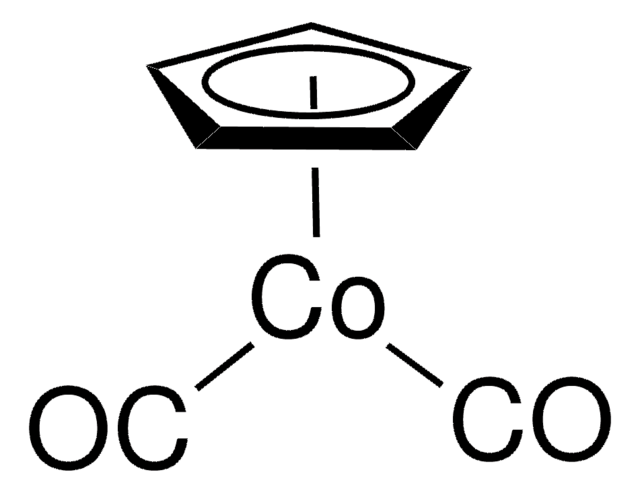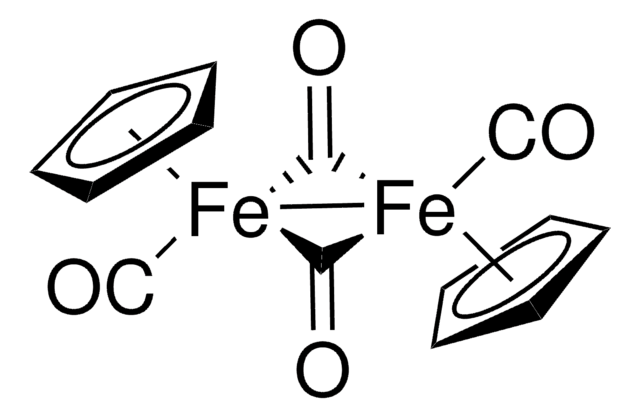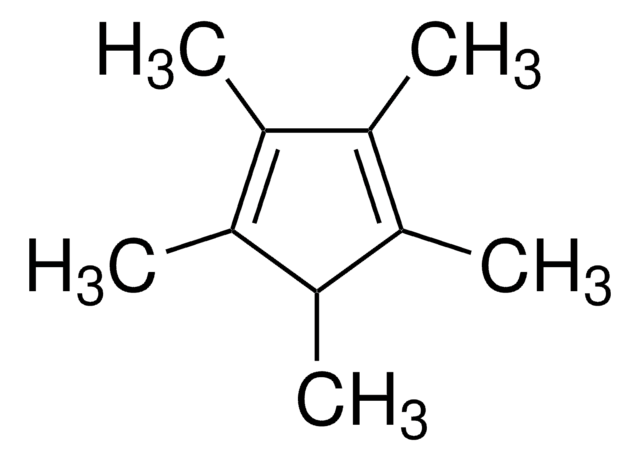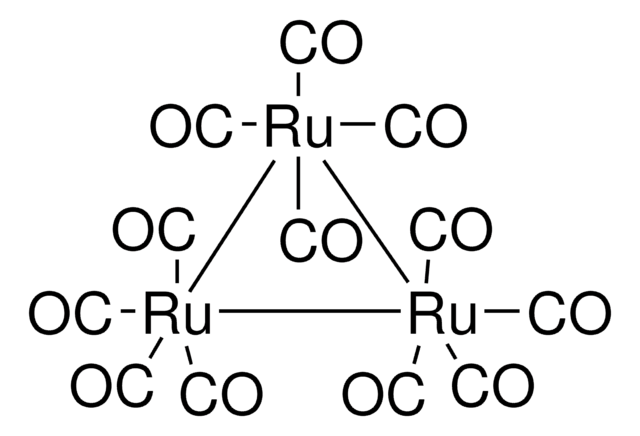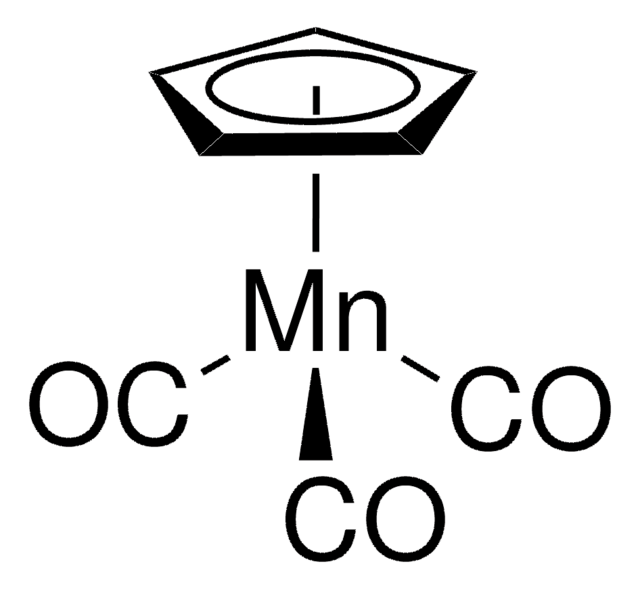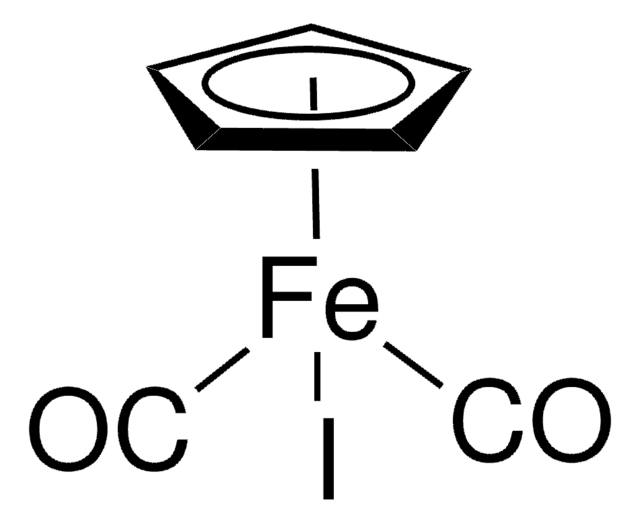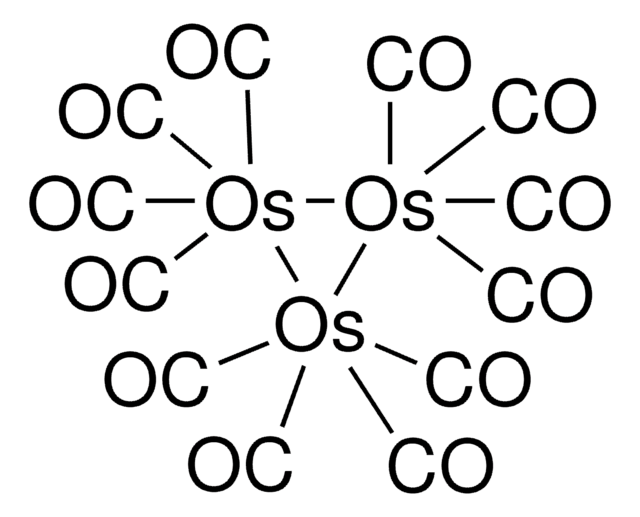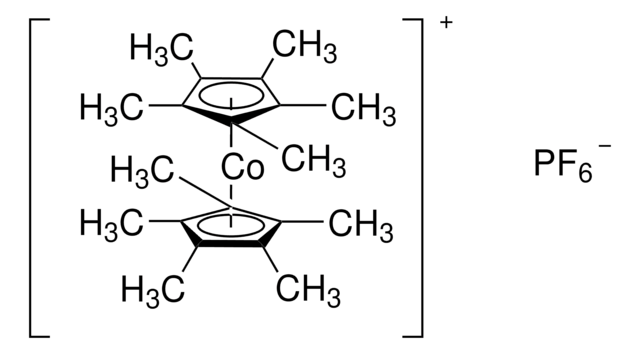60811
Cobalt carbonyl
moistened with hexane (hexane 1-10%), ≥90% (Co)
Synonym(s):
Cobalt tetracarbonyl dimer, Di-μ-carbonylhexacarbonyldicobal, Octacarbonyldicobalt, Dicobalt octacarbonyl
About This Item
Recommended Products
Quality Level
Assay
≥90% (Co)
form
solid
quality
moistened with hexane (hexane 1-10%)
reaction suitability
core: cobalt
reagent type: catalyst
storage temp.
2-8°C
SMILES string
[Co++].[Co++].[C-]#[O+].[C-]#[O+].[C-]#[O+].[C-]#[O+].[C-]#[O+].[C-]#[O+].[C-]#[O+].[C-]#[O+]
InChI
1S/8CO.2Co/c8*1-2;;/q;;;;;;;;2*+2
InChI key
MQIKJSYMMJWAMP-UHFFFAOYSA-N
Looking for similar products? Visit Product Comparison Guide
Application
- Cobalt carbonyl [Co2(CO)8] is commonly used as a catalyst in the hydroformylation (oxo reaction) of alkenes.
- Along with pyridine, it can be used as a catalyst in the carboxylation of alkenes into corresponding acids and esters.
- It is employed as a key precursor in the preparation of cobalt platinum (CoPt3), cobalt sulfide (Co3S4) and cobalt selenide (CoSe2) nanocrystals.
- It is also used as a reagent in Pauson-Khand cyclizations and Nicholas reaction.
Signal Word
Danger
Hazard Statements
Precautionary Statements
Hazard Classifications
Acute Tox. 1 Inhalation - Acute Tox. 4 Oral - Aquatic Chronic 3 - Carc. 2 - Repr. 2 - Self-heat. 1 - Skin Irrit. 2 - Skin Sens. 1 - STOT RE 2 Inhalation
Target Organs
Nervous system
Storage Class Code
4.2 - Pyrophoric and self-heating hazardous materials
WGK
WGK 3
Flash Point(F)
-9.4 °F
Flash Point(C)
-23 °C
Personal Protective Equipment
Regulatory Listings
Regulatory Listings are mainly provided for chemical products. Only limited information can be provided here for non-chemical products. No entry means none of the components are listed. It is the user’s obligation to ensure the safe and legal use of the product.
PRTR
Class I Designated Chemical Substances
FSL
Group 2: Flammable solids
Flammable solid
Hazardous rank III
ISHL Indicated Name
Substances Subject to be Indicated Names
ISHL Notified Names
Substances Subject to be Notified Names
JAN Code
60811-25G:4548173944647
60811-VAR:
60811-5G:4548173944654
60811-BULK:
Choose from one of the most recent versions:
Already Own This Product?
Find documentation for the products that you have recently purchased in the Document Library.
Customers Also Viewed
Articles
Nanostructured Materials Through Ultrasonic Spray Pyrolysis
Our team of scientists has experience in all areas of research including Life Science, Material Science, Chemical Synthesis, Chromatography, Analytical and many others.
Contact Technical Service